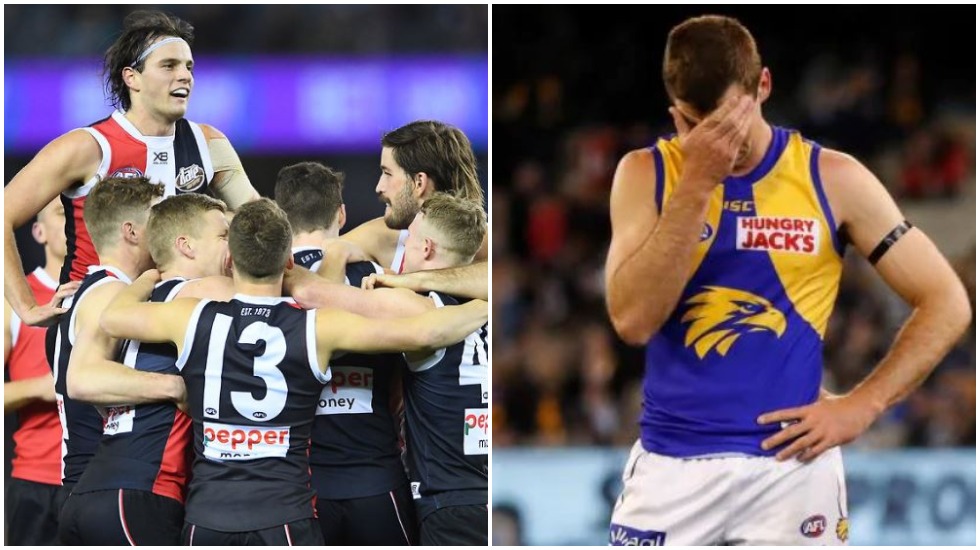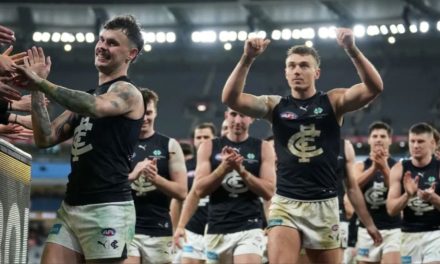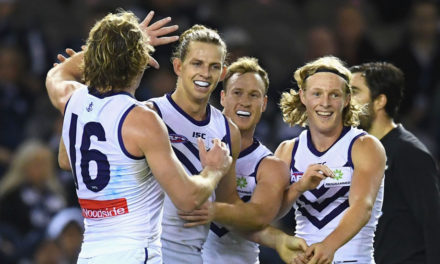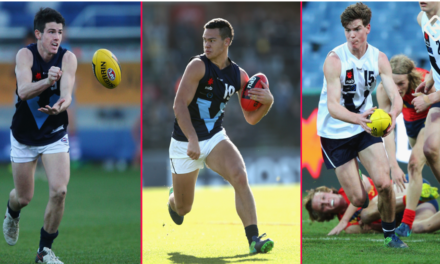St Kilda has been handed a pretty good fixture for 2020. It’s not, however, the case for West Coast. Photos: AFL MEDIA
The AFL fixturing team has worked hard in recent years to get an obviously compromised schedule at least as fair as possible, and to that end, they’ve done a pretty good job.
It’s meant a bit of give and take to do so. There’s more five-day breaks now, a tough ask, and there’s less symmetry than there used to be, summed up by the fact that round 23 of the 2020 season will see seven of nine games featuring teams playing each other for the first time.
But the fixture is these days about as even-handed as it can be. Paradoxically, though, with the gap between the 18 clubs smaller than ever, it means any little advantage a side can glean on-field via its fixture may have greater consequences.
And the Footyology fixturing formula, which I’ve been overseeing now both on this website and previously for The Age for the last decade, backs that up.
We concern ourselves only with the on-field ramifications, which quite often, logically, are at odds with those off field. For example, the more showpiece timeslots a club is given, the greater the likelihood they’re going to be up against quality opposition.
Our formula takes into account not just who plays who twice in isolation, or how many road trips a team has, but five factors combined that club insiders generally agree are the most important in on field terms.
They are which five teams are to be played twice, the number and, importantly, the destination of road trips, games featuring a home state versus an interstate opponent, and not just short breaks in isolation, but consecutive short breaks. That last factor has become more important, with this year and again next season, eight clubs having to cope with some five-day breaks.
Any of those factors on their own are not the full picture. Added together, using a points formula in which the lower the score the better the draw, I believe they give a pretty accurate summation of which teams have done well or otherwise.
Recent seasons have shown that any little edge can mean even more. When the 2017 draw was released, I rated Essendon, Port Adelaide and Richmond, none of whom had made finals in 2016, as having the three best draws in the competition. The Bombers and Power both got to September, and Richmond won a very unexpected flag.
When the 2018 fixture was released, I rated North Melbourne’s fixture as the easiest and Collingwood’s third-best. The Roos, an almost universal tip for bottom two, finished 2018 in ninth spot, just outside the finals. Not many had the Pies in their top eight. Of course, they came within a kick of a flag.
So who’s done well and who’s copped the short end of the straw for 2020? Two clubs leap out, one in a positive sense, and another which is really going to have its work cut out. Next season, that’s West Coast.
The Eagles have been superb on the road the last couple of years, and it’s just as well. Because while their travel requirements always inflate their score (remembering the lower the score the better) their total of 89 points for next year’s fixture is the highest I’ve ever recorded over nine seasons.
It’s also the greatest discrepancy we’ve seen between the team with toughest draw and the next hardest, which in this case will be Geelong, Collingwood and Richmond, but all three of those sides a long way back on 74 points.
While West Coast, like Fremantle, has a handy edge in its home state advantage, next year it is doing it tough in every other category.
All 10 of its road trips, of course, are considered long-haul. The Eagles’ “play twice” score is higher than any other team, West Coast having to play three of last season’s top four a second time.
And the Eagles are also one of just two teams (Essendon the other) which will have to cope with not just one, but two lots of consecutive six-day breaks throughout the course of the season.
The best 2020 fixture? I reckon that mantle goes to St Kilda, already on a bit of high with a new-ish coach in Brett Ratten, and coming off a boom trade period in which the Saints picked up Brad Hill, Zak Jones, Paddy Ryder, Dougal Howard and Dan Butler.
St Kilda built some decent momentum over the last six weeks of 2019, and have been given every chance of continuing it.
The Saints’ “play twice” score is equal second-lowest, Geelong the only side among the top 10 teams on the 2018 ladder they have to meet a second time, Adelaide, Fremantle, Carlton and Melbourne all having finished in the bottom eight.
While they venture to Shanghai once more, they also get to play an away game against Gold Coast in Darwin, make only one trip to Perth, and have no consecutive six-day breaks to worry about.
Two other teams which in an on-field sense would have to be pretty happy with the hands they’ve been dealt are Sydney and the Western Bulldogs.
It’s still hard to believe the Swans finished fourth-last on the 2019 ladder, but that has meant one of the handier draws the club has had for a long, long time, only of its 10 trips outside NSW considered long-haul, and its local rival GWS the only team among this year’s top seven it will play twice.
I’ve got the Bulldogs with the equal fourth-best draw, a very good result indeed for a finalist. They play only one rival finalist from 2019 (GWS) twice, and four of their five interstate trips will be short-haul to Sydney, Canberra and Adelaide (twice).
Most other clubs in terms of difficulty are around where you might expect them to be given their ladder finishes in 2019 and the fact the fixture is a handicap system of sorts with three groups of six teams determining the “play twice” arrangements.
And like the ladder, the differences are in many cases minimal. In our rankings this year, no fewer than 10 clubs have finished with the same points values as at least if not more rivals.
But every bit helps. It’s why Fremantle might not have ended up with any showpiece games in 2020 but has at least decent show of winning a few more given its favourable fixture. And why its bitter local rival is going to have to make every post a winner given one of the toughest draws we’ve seen for some time.











